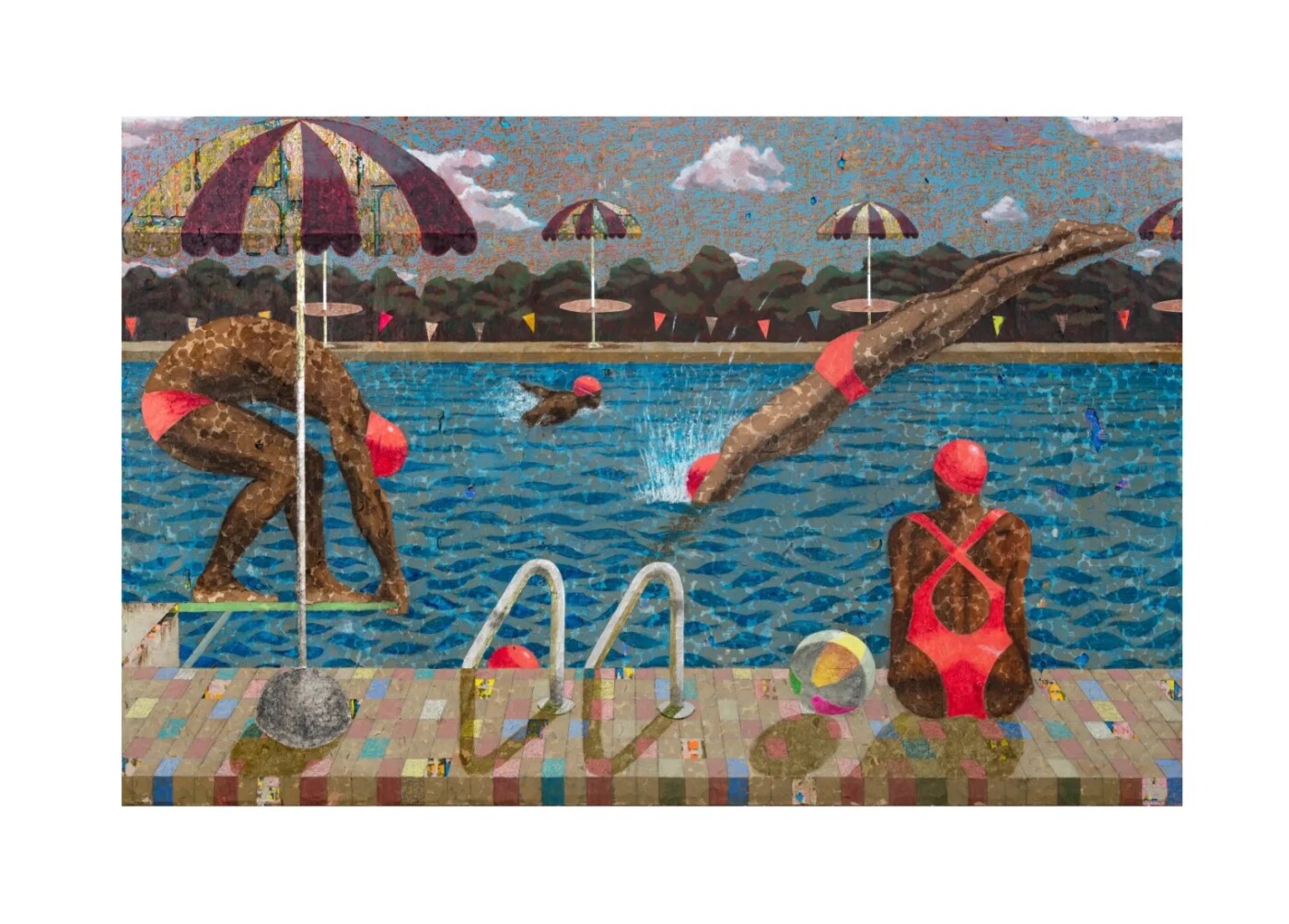Capturing today’s zeitgeist of sports and contemporary art, San Francisco Museum of Modern Art’s interactive “Get in the Game: Sports, Art, Culture” serves up more than 200 artworks and objects.
Running from Oct. 19 through Feb. 18, 2025 on the museum’s entire seventh floor, the massive, wide-ranging exhibition includes paintings, sculptures, sports gear, athletic apparel, photos, videos and installations where visitors design their own rules for engagement.

SFMOMA curator Jennifer Dunlop Fletcher, SFMOMA research director Katy Siegel and independent curator and writer Seph Rodney organized the show, which is divided into themes emphasizing crossovers and connections between sports, art and culture: “Mind and Body,” “Winning and Losing,” “A Fan’s Life,” “Breaking Records” and “Rules and Field of Play.”
“Get in the Game,” while stimulating, participatory and fun, is also provocative, examining how sports and art both involve play, individual expression, teamwork and competition. Both rely on spectators’ trust that what they’re witnessing is worthy of attention. And both can create social change.
Fletcher says the show features pieces by Gabriel Orozco and Gary Simmons, contemporary artists known for addressing sports in their work. But the curators were more surprised to find artists telling “significant” stories in just one or two works, perhaps being inspired by a personal achievement or the feeling of being excluded from sports or a special memory from their youth.
Other artists in the show remain athletes. One is a former Olympian; many others funded their college education in art with athletic scholarships.
The number of SFMOMA staff involved in sports provided inspiration as well. “We held open office hours, something we’ve never done before, which led to great conversations about if skateboarding is a sport, for example,” Fletcher says.
In an essay “The Games People Play,” Fletcher and Siegel address how spectators and observers of art and sports similarly assign value. When there is competition, viewers prioritize fairness. Venues—arenas, stadiums, ballfields, courts, museums, galleries, private collections, public buildings or outdoor installations —are hallowed spaces.
They add, “… Athletes today and historically have powerful voices that can change behavior, consumer patterns and policies by taking an activist position. The strength of the athlete’s voice right now comes from a number of factors.”

Objects and works in “Get in the Game” offer highly contrasting settings: a lone surfer versus a wave, a packed stadium with Jumbotrons, big teams, 100-person marching bands.
Historic extremes of access are exposed, too, specifically, in Derek Fordjour’s “Open Swim,” a mixed media piece picturing Black swimmers in a pool.
“His work speaks to segregation and the 1960s, when Black people were still limited to one hour to use (municipal) pools. In different spaces and times, we see different behaviors, inequalities,” Fletcher says.
Other pieces provide humor. Holly Bass’ “NWBA (Jordan)” is a rear view of a leaping player with two basketballs strapped together positioned as “butt cheeks.”
“It’s using a well-known position, a highly commercialized leap from Michael Jordan, that has become the logo of Jordan shoes. It’s a cheeky parody. But Jordan shoes are also something equally accepted on the basketball court and in the corporate board room. Many people have connection to that brand and its strength. Artists want to tease that out, have a critical eye on it,” says Fletcher.
Evolution in design can affect changes in sport. A prosthetic running blade, “Össur Cheetah Xceed foot” by Össur and Nike, Inc., reflects research and development around items such as the blade and racing wheelchairs, allowing more people to participate.
Though running blades became controversial (following South African amputee Oscar Pistorus’ use of them in the Olympics), Fletcher says, “We wanted that in the show, along with (showing) how environmental, commercial, and shifting consumer demands can cause change.”

SFMOMA departments worked collectively to make “Get in the Game” a participatory experience. Free community and First Thursday events, art-making programs and an “Artcade” where visitors can play original video games are offered in connection with the show.
And some pieces are interactive. In Orozco’s “Ping Pond Table,” four short, curve-ended tables are arranged around a square pool of water.
Fletcher says, “Yeah, the ball can land in the water, not on a table. You get to decide the rules with friends or strangers you meet. If it goes in the water you win…or you lose. You play with the art and make the sport, together.”
“Get in the Game: Sports, Art, Culture” runs Oct. 19-Feb. 18, 2025 at San Francisco Museum of Modern Art, 151 Third St, San Francisco. Admission is $30 general; $25 senior; $23 students; free for ages 18 and younger. Visit sfmoma.org.
The post SFMOMA invites museumgoers to play in big ‘Get in the Game’ appeared first on Local News Matters.
